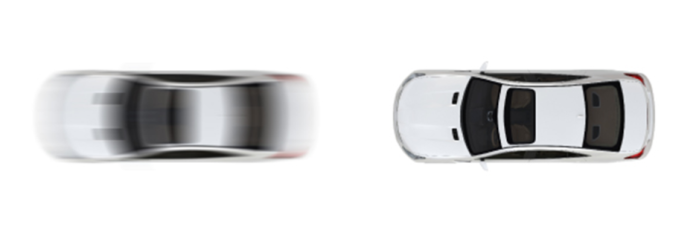When it comes to selecting cameras for smart-surveillance applications, the most important factor to consider is light sensitivity for indoor and outdoor environments. Here, we go into depth about the variety of factors that affect the selection of the best-fit image sensor for surveillance applications. The aim is to create solutions that are reliable and cost-effective.
With that said, there are many applications for AI-integrated cameras and processing algorithms, and one such focus area is smart cities and smart surveillance. These cameras serve the purpose of enhancing automation in smart cities. They are strategically positioned throughout the city to monitor the conditions of tracks and tunnels, survey parking lots, detect intruders, manage traffic and more.
Considering the specifics of each end application, cameras are equipped with various operating capabilities for optimal performance. There are several factors that determine the selection of the image sensor for smart indoor and outdoor surveillance. However, the major challenge for both applications is lighting conditions:
- Outdoor surveillance: External and environmental factors like weather and objects alter and affect the illuminance. Because a majority of these cameras are placed in bright spots and dark shadows, it makes it difficult to cover everything with a single-frame camera. Also, when light varies, high-definition images are often overexposed. The best way to overcome this challenge is with a specially designed image sensor that can operate in a very high dynamic range.
- Indoor surveillance: Take a use-case example like intruder detection. These cameras need to operate in extremely low-light conditions, and an effective solution could be near-infrared (NIR) lighting that cameras use when there is a deficit of light. These cameras use integrated NIR spectrum to provide a high level of sensitivity to process and analyze information. These cameras can produce good images in both visible and NIR regions with a wavelength range from 700 nm to 1,300 nm, even in no-light (nearly 0 lux) conditions.
Choosing the right imaging sensor is a more complex decision and requires meticulous analysis and research. For example, another factor that needs to be considered is selecting the right image sensor for enhancing the color output.
The problem that needs to be addressed here is noise in the output image. Capturing the color accurately in dark conditions is even more difficult. But to produce high-quality images, color accuracy and relatively less noise are of paramount importance. These can be achieved by equipping the cameras with large pixel sizes that generally have a better signal-to-noise ratio to reproduce true colors.
Furthermore, the choice of camera interface plays a pivotal role in determining how well the camera integrates with your specific application and budget constraints. Consider a scenario where a camera is mounted on a pole to detect fast-moving vehicle license plates.
In this use case, two critical issues must be addressed when capturing fast-moving objects:
- Rolling-shutter artifact: This is caused by the fact that in a rolling-shutter camera, there is an array of pixels that are exposed sequentially line by line. But the challenge is that the position of the object often changes with reference to the last line exposed, so a global-shutter sensor is used, which exposes the entire frame simultaneously to take the image at once.
- Motion blur: This phenomenon is caused in the output image when an object is moving too fast. To capture the object without blurring, the camera needs to have higher-shutter-speed capabilities and low exposure time. This camera enables the user to capture a higher number of frames per second in relatively less time.

Image captured with low-shutter-speed (left) and high-shutter-speed (right) cameras (Source: e-con Systems)
The drawback of using high-shutter-speed cameras are underexposed frames, depending on the access to light. Accounting for lighting conditions is imperative before adjusting the exposure time for faster capture. Additional lights can be used to luminate the surroundings, compensating for the reduction in exposure time. One more alternative to consider is the use of larger sensors with more pixels.
In general, global-shutter cameras are a better option for resolving rolling-shutter artifacts, and rolling-shutter cameras are good for high frame rate and reduced motion blur.
In the end, choosing the right camera for smart surveillance requires analysis and research of each use-case application. A sensor that serves various functions is critical to accelerating product development. Also, partnering with the right imaging solution provider, who has the required expertise and experience, helps to achieve faster time to market.
About the author
 Maharajan Veerabahu is co-founder and vice president of product design services at e-con Systems. Veerabahu is an engineering graduate from the Thanthai Periyar Government Institute of Technology, Madras University. Soon after his graduation, he started e-con Systems, which designs, builds and ships high-quality OEM camera modules to the U.S., Germany, Japan and more than 30 other countries outside of India. An end-to-end OEM camera solutions provider, e-con Systems is a one-stop shop for any product company looking to integrate a camera module into their device.
Maharajan Veerabahu is co-founder and vice president of product design services at e-con Systems. Veerabahu is an engineering graduate from the Thanthai Periyar Government Institute of Technology, Madras University. Soon after his graduation, he started e-con Systems, which designs, builds and ships high-quality OEM camera modules to the U.S., Germany, Japan and more than 30 other countries outside of India. An end-to-end OEM camera solutions provider, e-con Systems is a one-stop shop for any product company looking to integrate a camera module into their device.
Advertisement
Learn more about e-con Systems






